Working through the generation of the vehicle, next came the oil change reminder light or message. It is a wonderful thing to remind us to take good care of our vehicles. What a step up from the trip odometer or even the mileage/date sticker in the upper left corner of the windshield. But after the oil change, that reminder light, or message centre, must be reset.
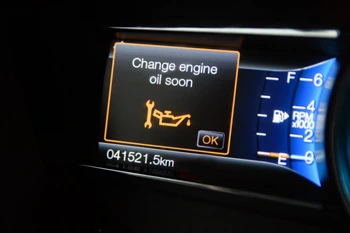
Oil Change Indicator
Before we go any further with resetting the oil change reminder, It would be remiss not to mention the BIG difference between the indicator light and the warning light.

Oil Warning Light
Remember, oil warning lights came along in the 1950’s to indicate low oil pressure. In 1988, GM came out with the first oil change reminder light based strictly on the odometer. From then on, many vehicles had both a warning light and an oil change reminder, providing two different very important functions. But many car owners are highly confused and uninformed about the difference.
In the early 80's I (Keith Wray - Snap-on National Trainer) worked as a repair shop manager who did a lot of oil changes. One afternoon I checked a vehicle that had been brought in with its oil light on and was making a crazy knocking sound. So I checked the dipstick and it was bone dry. The vehicle was only one year old with 28,000 miles. The owner had never changed the oil or even checked the dipstick before. I don’t believe he knew how until just now. I asked how long the oil warning light had been on., he said a few weeks but he hadn’t had time to get the oil changed. He thought the oil light meant to get it changed. It was way too late now. I wasn’t about to touch this car. The engine was obviously shot. I gently told the young man that I believed he needed to take it to the dealership where he had purchased it and that they could advise him on what to do. I suggested that he have it towed, but he was upset and jumped in and rattled off away. I do not know how that turned out, I can only guess.
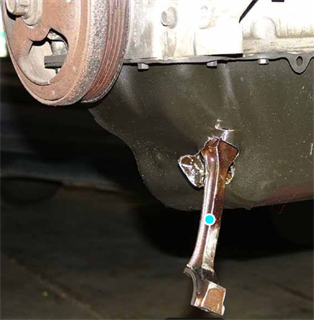
Rod Through the Oil Pan
So, back to the oil change reminder resets. Before 1988, we would just change the oil then reset the trip odometer, write the date and mileage in a spiral-bound maintenance log in the glove box, or have a sticker inside the windshield.
In today’s world, a reset is required to put the reminder back to zero – fresh oil change. How? That depends entirely on the OEM. Some have a manual reset procedure as seen below from Snap-on scan tool's - Oil Specs and Resets.
2016 Toyota Camry Manual Procedures

Modern-day vehicles have a wide range of required resets with many OEMs requiring a scan tool to reset the reminder, such as the 2013 E series BMW, seen below. In fact, there are resets required for several regular maintenance items. So, How important are resets/relearns really? Well, if any of these maintenance reminders below are not reset, those systems may not be serviced when required, resulting in expensive damage to the vehicle.

A perfect example is the now infamous, misunderstood issue of GM/Vauxhall. What happens when an oxygen sensor is replaced, but a relearn to reset the heater resistance value is not performed as cautioned below? More than likely the new sensor will be damaged and cause a customer comeback as well.

The relearn is a fast, simple procedure in the scan tool as shown below. In Top Repairs, you can also see that the O2 sensor is a commonly replaced item, especially after 100,000 miles or 160,000 kilometers. I should ask again, how important are reset/relearns really?
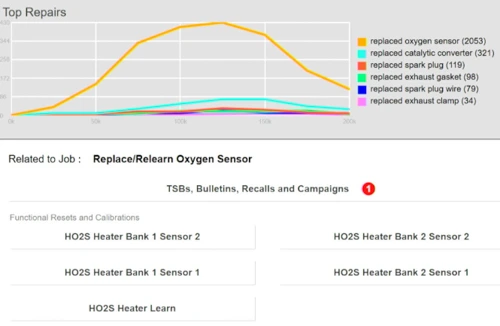
Let’s look at a 2016 Toyota Camry 2.5L MFI and see what resets/relearns might be important.
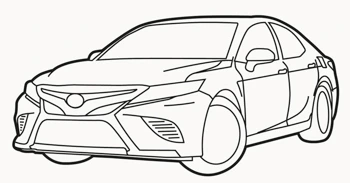
This vehicle has eight critical reset/relearns just on engine components. They are all critical because once again, when not performed correctly, a comeback or a damaged component could be the outcome. A great example is 'Replace/Relearn Throttle Body'. Toyota says that when the throttle body is replaced or even cleaned, a relearn must be done, otherwise it will result in poor performance and possibly a check engine light could appear…and a comeback, right?

Many of these resets and relearns have been necessary for years. I used to teach that when a component is replaced, a handshake was needed to introduce the new part to the PCM. If you fail to do the introductions, the PCM will not recognise the new component. That helps me remember to look for repair resets and relearns required after completing a repair.
Fast-Track® Intellegent Diagnostics conveniently list only the relevant resets needed for the component that has been replaced. What a great way to make sure you don’t miss this vital step!

A newer system where resets and relearns are necessary, not only to prevent damaged components and reduce comebacks but maybe most importantly, to maintain safety features like ADAS (Advanced Driver Assistance Systems). Virtually anything replaced or repaired on this system WILL need a reset. Some can be done with a Snap-on scan tool only, and at times, a target system will be required as well.


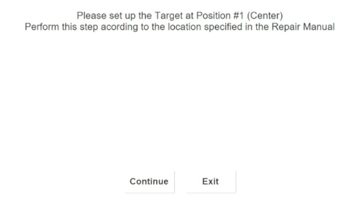
Resets and relearns are required for the most basic repairs such as oil changes and battery replacement. They are also needed on some of the most sophisticated systems like ADAS. The good news is that with the right equipment and access to the correct procedures to follow, resets and relearns are there to help us reduce comebacks, prevent component damage, and keep the occupants of the vehicle safe.
Sign-Up to Exclusive Snap-on Content